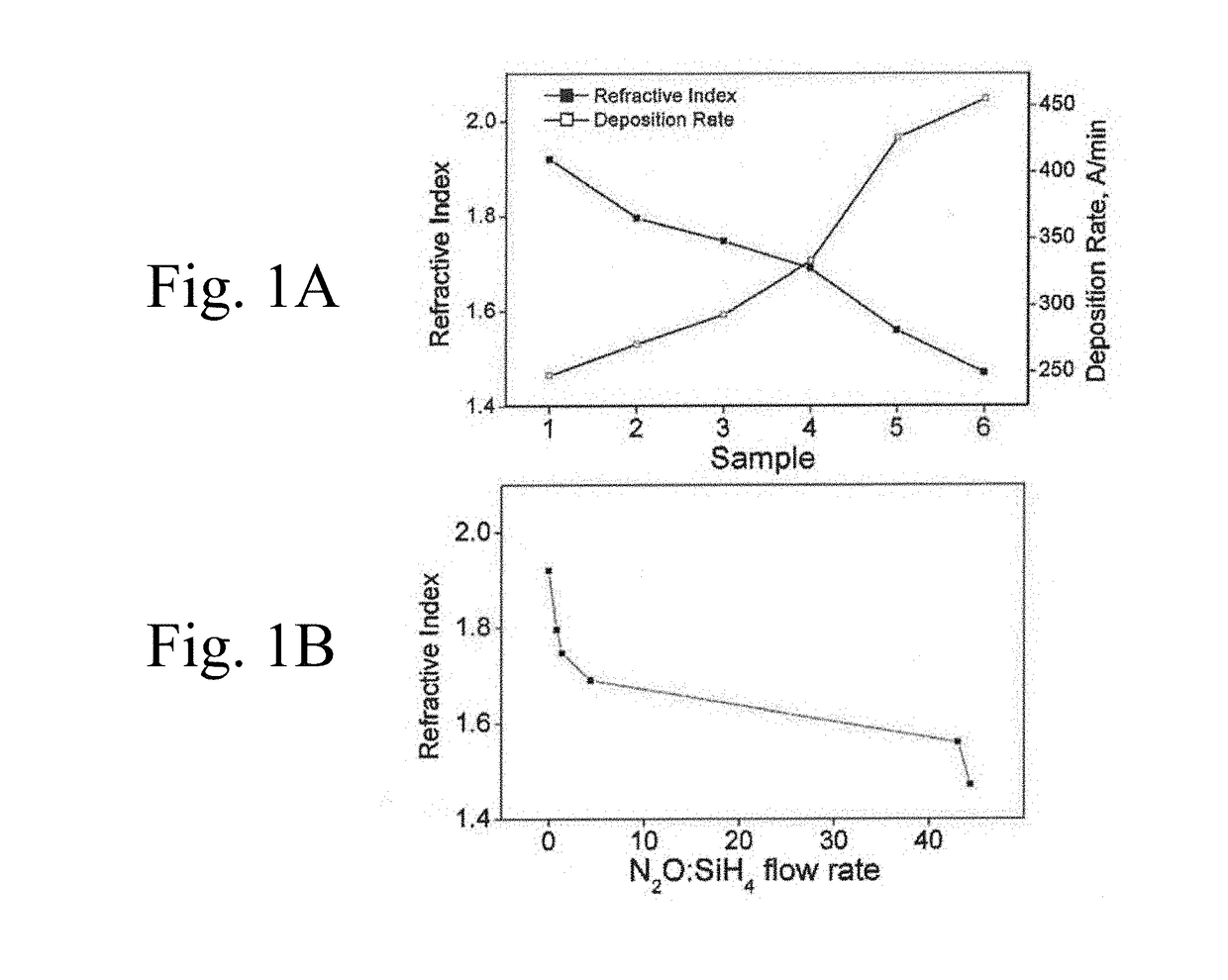Si-o-n-p related fabrication methods, surface treatments and uses thereof
- Summary
- Abstract
- Description
- Claims
- Application Information
AI Technical Summary
Benefits of technology
Problems solved by technology
Method used
Image
Examples
example 2
cterization
[0140]X-ray diffraction was used to investigate the film for the formation of any crystalline phases. A Bruker D8 Advance diffractometer was used to collect Bragg-Brentano scans using Cu kα radiation (λ=1.5418 Å) at room temperature. Data was recorded over the 2θ range of 20-80° with a 0.02° step size and a dwell time of 1 second.
[0141]X-ray diffraction was used to confirm the amorphous nature of the coatings. Though X-ray spectra do not show two broad 2theta peaks typical to amorphous silicon oxynitrides117: one around 20-30° and one around 60-80°; it is assumed that the SiO2 sub-layer dominates the spectra resulting in one amorphous silica peak. FIG. 3 shows representative spectra from the highest N content Sample 1 and the highest O content sample 6. Other samples show the same general spectra, and spectra are too noisy to provide a basis for comparison and establish a general trend in the data.
[0142]XRD spectra confirm that the coatings formed were amorphous.
example 3
DS Evaluation
[0143]Surface morphology, film composition, and film thickness were investigated using scanning electron microscopy (Hitachi S-3000N Variable Pressure SEM) equipped with an energy dispersive X-ray spectrometry system (EDAX). SEM images were taken with an acceleration voltage of 20 keV and scans for EDX mapping and compositional studies were taken at 12 keV to prevent interference from sub-coating layers. EDAX software was used to quantify spectral mapping data from 50 μm×50 μm areas. Four regions of interest (ROIs) corresponding to Si, O, N, and P Kα lines were defined and compositional information was calculated using EDAX's proprietary ZAF method.
[0144]Coating thickness and surface morphology was confirmed by SEM imaging and found to be in agreement with ellipsometry measurements. EDS mapping showed no major carbon or other contaminants and a uniform elemental distribution normal to the wafer surface. A ZAF quantification method was used to determine the atomic % of e...
example 4
nergy Evaluation
[0148]A sessile drop technique was used to determine contact angles of distilled, deionized water and diiodomethane (>99%, Sigma-Aldrich, St. Louis, Mo., USA) on the wafer coating surface. For each liquid, 9 repeat drops were measured at 25° C. and samples were tested in triplicate. The surface tension of the testing fluids including the polar and dispersive components was taken from literature values at the same experimental conditions and can be seen in Table 3. Surface energy (γLV) and its corresponding dispersive (γd) and polar (γp) component values for probing liquids113,114.
TABLE 3Probing fluidγLV (mJ m−2)γd (mJ m−2)γp (mJ m−2)Water72.821.851.0Diiodomethane50.850.40.4
[0149]The hydrophilicity of the surface was inferred from the contact angle with water and the surface energy values of the samples were obtained by relating the measured probing liquid contact angles (θ) and relating them to solid surface energy dispersive and polar components by the Owens-Wendt-K...
PUM
| Property | Measurement | Unit |
|---|---|---|
| Fraction | aaaaa | aaaaa |
| Thickness | aaaaa | aaaaa |
| Thickness | aaaaa | aaaaa |
Abstract
Description
Claims
Application Information
 Login to View More
Login to View More - R&D
- Intellectual Property
- Life Sciences
- Materials
- Tech Scout
- Unparalleled Data Quality
- Higher Quality Content
- 60% Fewer Hallucinations
Browse by: Latest US Patents, China's latest patents, Technical Efficacy Thesaurus, Application Domain, Technology Topic, Popular Technical Reports.
© 2025 PatSnap. All rights reserved.Legal|Privacy policy|Modern Slavery Act Transparency Statement|Sitemap|About US| Contact US: help@patsnap.com



